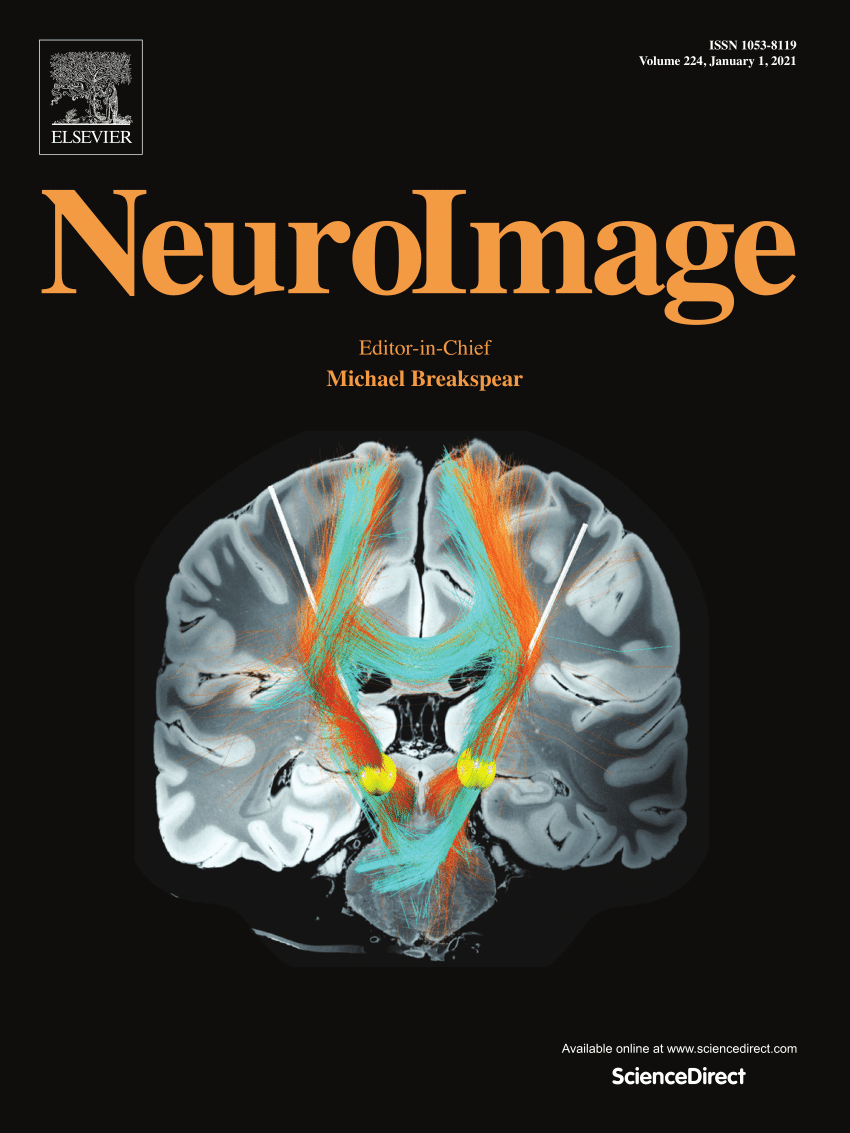Analgesic aftereffects of alpha high-definition transcranial alternating current stimulation over the DLPFC during experimental pain
IF 4.7
2区 医学
Q1 NEUROIMAGING
引用次数: 0
Abstract
High-definition transcranial alternating current stimulation (HD-tACS) targeting the dorsolateral prefrontal cortex (DLPFC) holds promise for pain management, though its neurobiological mechanisms remain unclear. This study aimed to investigate whether alpha HD-tACS applied to the left DLPFC modulates gamma oscillations to sustain analgesia during capsaicin-induced experimental pain (0.1% Capsaicin cream). Forty-five healthy participants underwent a single-blind, within-subject, sham-controlled protocol. EEG recordings were taken at three key time points: baseline (resting state), 5 minutes post-HD-tACS, and 15 minutes post-HD-tACS. Numeric rating scale (NRS) and oscillatory power changes were analyzed before, during, and after both active and sham stimulation. Results showed that active alpha HD-tACS significantly reduced NRS and area under curve (AUC) scores during both the stimulation period (0-30 minutes) and the post-stimulation period (30-60 minutes) compared to sham. EEG analyses revealed increased theta (4-7 Hz), alpha (8-13 Hz), beta(14-29 Hz), and low gamma (30-55 Hz) oscillations in the left DLPFC post-stimulation, but only low gamma oscillations passed the false discovery rate (FDR) correction. These findings suggest that alpha HD-tACS induces delayed analgesia by modulating low gamma oscillations in the DLPFC, highlighting its potential as a tool for optimizing non-invasive neuromodulation in pain therapy. The study bridges mechanistic insights with clinical outcomes, emphasizing the role of DLPFC low gamma activity in maintaining endogenous pain control.
高清晰度经颅交流电刺激对实验性疼痛中DLPFC的镇痛后效。
针对背外侧前额叶皮层(DLPFC)的高清晰度经颅交流电刺激(HD-tACS)有望治疗疼痛,尽管其神经生物学机制尚不清楚。本研究旨在探讨在辣椒素诱导的实验性疼痛(0.1%辣椒素乳膏)中,应用于左DLPFC的α HD-tACS是否调节γ振荡以维持镇痛。45名健康的参与者接受了单盲、受试者内部、假控制的实验。在基线(静息状态)、hd - tacs后5分钟和hd - tacs后15分钟三个关键时间点采集EEG记录。数值评定量表(NRS)和振荡功率变化分别在有源刺激和假刺激之前、期间和之后进行了分析。结果表明,与假手术相比,激活的α - HD-tACS在刺激期(0-30分钟)和刺激后(30-60分钟)均显著降低了NRS和AUC评分。脑电图分析显示,刺激后左DLPFC的θ (4-7 Hz)、α (8-13 Hz)、β (14-29 Hz)和低伽马(30-55 Hz)振荡增加,但只有低伽马振荡通过了错误发现率(FDR)校正。这些发现表明,α HD-tACS通过调节DLPFC中的低伽马振荡诱导延迟镇痛,突出了其作为优化疼痛治疗中非侵入性神经调节工具的潜力。该研究将机制见解与临床结果联系起来,强调DLPFC低伽马活动在维持内源性疼痛控制中的作用。
本文章由计算机程序翻译,如有差异,请以英文原文为准。
求助全文
约1分钟内获得全文
求助全文
来源期刊

NeuroImage
医学-核医学
CiteScore
11.30
自引率
10.50%
发文量
809
审稿时长
63 days
期刊介绍:
NeuroImage, a Journal of Brain Function provides a vehicle for communicating important advances in acquiring, analyzing, and modelling neuroimaging data and in applying these techniques to the study of structure-function and brain-behavior relationships. Though the emphasis is on the macroscopic level of human brain organization, meso-and microscopic neuroimaging across all species will be considered if informative for understanding the aforementioned relationships.
 求助内容:
求助内容: 应助结果提醒方式:
应助结果提醒方式:


